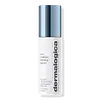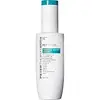What's inside
What's inside
 Key Ingredients
Key Ingredients

 Benefits
Benefits

 Concerns
Concerns

 Ingredients Side-by-side
Ingredients Side-by-side

Water
Skin ConditioningPentylene Glycol
Skin ConditioningCoco-Caprylate/Caprate
EmollientGlycerin
HumectantPropanediol
SolventSimmondsia Chinensis Seed Oil
EmollientTrehalose
HumectantOryza Sativa Bran Water
MaskingButylene Glycol
HumectantEthoxydiglycol
HumectantTriheptanoin
Skin ConditioningArginine PCA
HumectantDiglycerin
HumectantDipotassium Glycyrrhizate
HumectantSodium Hyaluronate
HumectantCollagen Amino Acids
MoisturisingGlycine Soja Oil
EmollientHelianthus Annuus Seed Oil
EmollientCitrus Aurantium Dulcis Peel Oil
MaskingCitrus Aurantium Bergamia Fruit Oil
MaskingCitrus Paradisi Peel Oil
MaskingRosmarinus Officinalis Leaf Extract
AntimicrobialCupressus Sempervirens Leaf/Nut/Stem Oil
EmollientSantalum Album Oil
MaskingCitrus Limon Peel Oil
MaskingRosa Damascena Flower Oil
MaskingJasminum Sambac Flower Extract
MaskingHydrolyzed Jojoba Esters
Skin ConditioningOryza Sativa Bran Extract
Skin ConditioningAloe Barbadensis Leaf Extract
EmollientTephrosia Purpurea Seed Extract
Skin ConditioningHelianthus Annuus Extract
EmollientJuniperus Virginiana Oil
MaskingTagetes Minuta Flower Oil
MaskingRosmarinus Officinalis Leaf Oil
MaskingCistus Ladaniferus Leaf/Stem Extract
MaskingHydrolyzed Rice Protein
Skin ConditioningTocopheryl Acetate
AntioxidantTocopherol
AntioxidantPhospholipids
Skin ConditioningCarnosine
Skin ConditioningGlyceryl Stearate Citrate
EmollientCaprylyl Glycol
EmollientPolyglutamic Acid
Skin ConditioningGlycolipids
Skin ConditioningGlycine Soja Sterols
EmollientAcrylates/C10-30 Alkyl Acrylate Crosspolymer
Emulsion StabilisingGlyceryl Caprylate
EmollientSclerotium Gum
Emulsion StabilisingPolyquaternium-80
CleansingDidecyldimonium Chloride
EmulsifyingDianthus Caryophyllus Flower Extract
MaskingXanthan Gum
EmulsifyingMethylpropanediol
SolventCetearyl Alcohol
EmollientPEG-40 Hydrogenated Castor Oil
EmulsifyingAmmonium Acryloyldimethyltaurate/Beheneth-25 Methacrylate Crosspolymer
Emulsion StabilisingPhytic Acid
Polysorbate 20
EmulsifyingTetrasodium Glutamate Diacetate
Citric Acid
BufferingSodium Hydroxide
BufferingSodium Polyacryloyldimethyl Taurate
Emulsion StabilisingSodium Benzoate
MaskingPotassium Sorbate
PreservativeLimonene
PerfumingLinalool
PerfumingWater, Pentylene Glycol, Coco-Caprylate/Caprate, Glycerin, Propanediol, Simmondsia Chinensis Seed Oil, Trehalose, Oryza Sativa Bran Water, Butylene Glycol, Ethoxydiglycol, Triheptanoin, Arginine PCA, Diglycerin, Dipotassium Glycyrrhizate, Sodium Hyaluronate, Collagen Amino Acids, Glycine Soja Oil, Helianthus Annuus Seed Oil, Citrus Aurantium Dulcis Peel Oil, Citrus Aurantium Bergamia Fruit Oil, Citrus Paradisi Peel Oil, Rosmarinus Officinalis Leaf Extract, Cupressus Sempervirens Leaf/Nut/Stem Oil, Santalum Album Oil, Citrus Limon Peel Oil, Rosa Damascena Flower Oil, Jasminum Sambac Flower Extract, Hydrolyzed Jojoba Esters, Oryza Sativa Bran Extract, Aloe Barbadensis Leaf Extract, Tephrosia Purpurea Seed Extract, Helianthus Annuus Extract, Juniperus Virginiana Oil, Tagetes Minuta Flower Oil, Rosmarinus Officinalis Leaf Oil, Cistus Ladaniferus Leaf/Stem Extract, Hydrolyzed Rice Protein, Tocopheryl Acetate, Tocopherol, Phospholipids, Carnosine, Glyceryl Stearate Citrate, Caprylyl Glycol, Polyglutamic Acid, Glycolipids, Glycine Soja Sterols, Acrylates/C10-30 Alkyl Acrylate Crosspolymer, Glyceryl Caprylate, Sclerotium Gum, Polyquaternium-80, Didecyldimonium Chloride, Dianthus Caryophyllus Flower Extract, Xanthan Gum, Methylpropanediol, Cetearyl Alcohol, PEG-40 Hydrogenated Castor Oil, Ammonium Acryloyldimethyltaurate/Beheneth-25 Methacrylate Crosspolymer, Phytic Acid, Polysorbate 20, Tetrasodium Glutamate Diacetate, Citric Acid, Sodium Hydroxide, Sodium Polyacryloyldimethyl Taurate, Sodium Benzoate, Potassium Sorbate, Limonene, Linalool
Water
Skin ConditioningGlycerin
HumectantRosa Centifolia Flower Water
Skin ConditioningIsopropyl Myristate
EmollientSqualane
EmollientMannitol
HumectantButylene Glycol
HumectantNatto Gum
Tripeptide-10 Citrulline
Skin ConditioningAcetyl Octapeptide-3
HumectantPalmitoyl Hexapeptide-12
Skin ConditioningAcetyl Tetrapeptide-11
Skin ConditioningAcetyl Hexapeptide-8
HumectantAcetyl Hexapeptide-1
Skin ConditioningPalmitoyl Oligopeptide
CleansingAcetyl Tetrapeptide-9
Skin ConditioningAcetyl Tetrapeptide-2
Skin ConditioningTripeptide-1
Skin ConditioningPalmitoyl Tetrapeptide-7
Skin ConditioningHexapeptide-11
Skin ConditioningDipeptide Diaminobutyroyl Benzylamide Diacetate
Skin ConditioningPalmitoyl Tripeptide-5
Skin ConditioningTrifluoroacetyl Tripeptide-2
Skin ConditioningPalmitoyl Tripeptide-1
Skin ConditioningSodium Polyglutamate
HumectantSodium Hyaluronate
HumectantTocopheryl Acetate
AntioxidantRetinyl Palmitate
Skin ConditioningAscorbic Acid
AntioxidantHydrolyzed Soy Protein
HumectantHydrolyzed Wheat Protein
Skin ConditioningLecithin
EmollientPseudoalteromonas Ferment Extract
HumectantAcrylates Copolymer
Magnesium Chloride
Polysorbate 20
EmulsifyingDimethyl Isosorbide
SolventAcrylates/C10-30 Alkyl Acrylate Crosspolymer
Emulsion StabilisingLeuconostoc/Radish Root Ferment Filtrate
AntimicrobialPEG-8 Dimethicone
EmulsifyingDisodium Phosphate
BufferingCarbomer
Emulsion StabilisingDextran
Sodium Lactate
BufferingTetradecyl Aminobutyroylvalylaminobutyric Urea Trifluoroacetate
Skin ConditioningXanthan Gum
EmulsifyingTriethanolamine
BufferingSodium Phosphate
BufferingOctyldodecanol
EmollientSilica
AbrasiveSodium Propoxyhydroxypropyl Thiosulfate Silica
Sodium Hydroxide
BufferingCaprylyl Glycol
EmollientPotassium Sorbate
PreservativeSodium Benzoate
MaskingPhenoxyethanol
PreservativeWater, Glycerin, Rosa Centifolia Flower Water, Isopropyl Myristate, Squalane, Mannitol, Butylene Glycol, Natto Gum, Tripeptide-10 Citrulline, Acetyl Octapeptide-3, Palmitoyl Hexapeptide-12, Acetyl Tetrapeptide-11, Acetyl Hexapeptide-8, Acetyl Hexapeptide-1, Palmitoyl Oligopeptide, Acetyl Tetrapeptide-9, Acetyl Tetrapeptide-2, Tripeptide-1, Palmitoyl Tetrapeptide-7, Hexapeptide-11, Dipeptide Diaminobutyroyl Benzylamide Diacetate, Palmitoyl Tripeptide-5, Trifluoroacetyl Tripeptide-2, Palmitoyl Tripeptide-1, Sodium Polyglutamate, Sodium Hyaluronate, Tocopheryl Acetate, Retinyl Palmitate, Ascorbic Acid, Hydrolyzed Soy Protein, Hydrolyzed Wheat Protein, Lecithin, Pseudoalteromonas Ferment Extract, Acrylates Copolymer, Magnesium Chloride, Polysorbate 20, Dimethyl Isosorbide, Acrylates/C10-30 Alkyl Acrylate Crosspolymer, Leuconostoc/Radish Root Ferment Filtrate, PEG-8 Dimethicone, Disodium Phosphate, Carbomer, Dextran, Sodium Lactate, Tetradecyl Aminobutyroylvalylaminobutyric Urea Trifluoroacetate, Xanthan Gum, Triethanolamine, Sodium Phosphate, Octyldodecanol, Silica, Sodium Propoxyhydroxypropyl Thiosulfate Silica, Sodium Hydroxide, Caprylyl Glycol, Potassium Sorbate, Sodium Benzoate, Phenoxyethanol
Ingredients Explained
These ingredients are found in both products.
Ingredients higher up in an ingredient list are typically present in a larger amount.
Acrylates/C10-30 Alkyl Acrylate Crosspolymer is a synthetic polymer. It is used to thicken and improve the texture of products. Due to its properties, it can prevent water and oil ingredients from separating.
Butylene Glycol (or BG) is used within cosmetic products for a few different reasons:
Overall, Butylene Glycol is a safe and well-rounded ingredient that works well with other ingredients.
Though this ingredient works well with most skin types, some people with sensitive skin may experience a reaction such as allergic rashes, closed comedones, or itchiness.
Learn more about Butylene GlycolCaprylyl Glycol is a humectant and emollient, meaning it attracts and preserves moisture.
It is a common ingredient in many products, especially those designed to hydrate skin. The primary benefits are retaining moisture, skin softening, and promoting a healthy skin barrier.
Though Caprylyl Glycol is an alcohol derived from fatty acids, it is not the kind that can dry out skin.
This ingredient is also used as a preservative to extend the life of products. It has slight antimicrobial properties.
Learn more about Caprylyl GlycolGlycerin is already naturally found in your skin. It helps moisturize and protect your skin.
A study from 2016 found glycerin to be more effective as a humectant than AHAs and hyaluronic acid.
As a humectant, it helps the skin stay hydrated by pulling moisture to your skin. The low molecular weight of glycerin allows it to pull moisture into the deeper layers of your skin.
Hydrated skin improves your skin barrier; Your skin barrier helps protect against irritants and bacteria.
Glycerin has also been found to have antimicrobial and antiviral properties. Due to these properties, glycerin is often used in wound and burn treatments.
In cosmetics, glycerin is usually derived from plants such as soybean or palm. However, it can also be sourced from animals, such as tallow or animal fat.
This ingredient is organic, colorless, odorless, and non-toxic.
Glycerin is the name for this ingredient in American English. British English uses Glycerol/Glycerine.
Learn more about GlycerinPolysorbate 20 is made by combining ethoxylation of sorbitan, ethylene oxide, and lauric acid. It is a mild cleansing agent, surfactant, and emulsifier.
As a surfactant, it helps collect dirt and oils for washing. Emulsifiers prevent oils and water from separating.
Polysorbate 20 also adds scent to a product. Since it is made using sorbitol, it has a sweet scent. Sorbitol can also be found in fruits such as apples and peaches.
The lauric acid used to create Polysorbate 20 is often derived from coconuts.
Polysorbate 20 may not be fungal acne safe.
Learn more about Polysorbate 20Potassium Sorbate is a preservative used to prevent yeast and mold in products. It is commonly found in both cosmetic and food products.
This ingredient comes from potassium salt derived from sorbic acid. Sorbic acid is a natural antibiotic and effective against fungus.
Both potassium sorbate and sorbic acid can be found in baked goods, cheeses, dried meats, dried fruit, ice cream, pickles, wine, yogurt, and more.
You'll often find this ingredient used with other preservatives.
Learn more about Potassium SorbateSodium Benzoate is a preservative. It's used in both cosmetic and food products to inhibit the growth of mold and bacteria. It is typically produced synthetically.
Both the US FDA and EU Health Committee have approved the use of sodium benzoate. In the US, levels of 0.1% (of the total product) are allowed.
Sodium benzoate works as a preservative by inhibiting the growth of bacteria inside of cells. It prevents the cell from fermenting a type of sugar using an enzyme called phosphofructokinase.
It is the salt of benzoic acid. Foods containing sodium benzoate include soda, salad dressings, condiments, fruit juices, wines, and snack foods.
Studies for using ascorbic acid and sodium benzoate in cosmetics are lacking, especially in skincare routines with multiple steps.
We always recommend speaking with a professional, such as a dermatologist, if you have any concerns.
Learn more about Sodium BenzoateSodium Hyaluronate is hyaluronic acid's salt form. It is commonly derived from the sodium salt of hyaluronic acid.
Like hyaluronic acid, it is great at holding water and acts as a humectant. This makes it a great skin hydrating ingredient.
Sodium Hyaluronate is naturally occurring in our bodies and is mostly found in eye fluid and joints.
These are some other common types of Hyaluronic Acid:
Learn more about Sodium HyaluronateSodium Hydroxide is also known as lye or caustic soda. It is used to adjust the pH of products; many ingredients require a specific pH to be effective.
In small amounts, sodium hydroxide is considered safe to use. However, large amounts may cause chemical burns due to its high alkaline.
Your skin has a natural pH and acid mantle. This acid mantle helps prevent harmful bacteria from breaking through. The acid mantle also helps keep your skin hydrated.
"Alkaline" refers to a high pH level. A low pH level would be considered acidic.
Learn more about Sodium HydroxideTocopheryl Acetate is AKA Vitamin E. It is an antioxidant and protects your skin from free radicals. Free radicals damage the skin by breaking down collagen.
One study found using Tocopheryl Acetate with Vitamin C decreased the number of sunburned cells.
Tocopheryl Acetate is commonly found in both skincare and dietary supplements.
Learn more about Tocopheryl AcetateWater. It's the most common cosmetic ingredient of all. You'll usually see it at the top of ingredient lists, meaning that it makes up the largest part of the product.
So why is it so popular? Water most often acts as a solvent - this means that it helps dissolve other ingredients into the formulation.
You'll also recognize water as that liquid we all need to stay alive. If you see this, drink a glass of water. Stay hydrated!
Learn more about WaterXanthan gum is used as a stabilizer and thickener within cosmetic products. It helps give products a sticky, thick feeling - preventing them from being too runny.
On the technical side of things, xanthan gum is a polysaccharide - a combination consisting of multiple sugar molecules bonded together.
Xanthan gum is a pretty common and great ingredient. It is a natural, non-toxic, non-irritating ingredient that is also commonly used in food products.
Learn more about Xanthan Gum